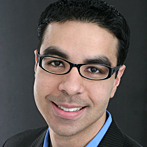Q1. What do organizations need to understand about the nature and scope of phishing threats these days?
Organizations need to debunk the myth that most phishing attacks fall into extreme categories. Meaning, they're of the "Nigerian prince scam" variety or come from uber-sophisticated nation-state actors. While those types of phishing attacks certainly persist, they're the exception, not the norm. So, what is the norm? It's cyber-criminal activity. It's phishing campaigns whose aim is to distribute malware and steal data and intellectual property, or to lock down your systems with ransomware.
Of course, malware isn't the only threat your phishing defense needs to stop. There are also good old-fashioned scams—for example, social engineering tactics like tricking employees into making large wire transfers. Or emails that take users to webpages that look legitimate but are designed to harvest credentials. Though these types of attacks don't involve malware, they can still inflict great damage by giving attackers network access or, ii the case of wire fraud, siphoning off funds.
Tech defenses don't work as well against social engineering attacks. These technologies examine IPs or attachments as they search for malware. Ironically, the very targets of attacks, your employees, are your last layer of defense. Here's one example. Man in the Inbox attacks come from internal email accounts that have already been compromised. When your employees receive emails from trusted internal sources, they're naturally inclined to click.
Tech defenses like secure email gateways won't see these attacks, because they don't come from beyond the perimeter. Some technology goes as far as white-listing all internal accounts. When these attacks occur, your employees need to be skeptical and think carefully before they respond. We have seen employees successfully detect such attacks by realizing the tone or style of the email didn't quite match that of the sender, which in turn made the recipient suspicious enough to report the email to their security operations team.
Q2. What are some of the most important elements of an effective defense strategy against phishing?
The most important element is, simply knowing there are no silver bullets. There's no single technology that lets you push a button and sleep well. Phishing attacks are constantly evolving. Threat actors study your security controls and make very smart adjustments, so you need a comprehensive approach to counteracting them. That approach should be collaborative, too, meaning people throughout your organization, not just across the security teams, need to recognize and report phishing emails. It greatly helps your incident responders stop attacks in progress.
Here's why the human factor matters. If you program your technology to perform in specific ways, that's what it will do time and time again. While the detection capabilities of the technical controls may evolve over time if they incorporate machine learning, the speed of adaptation will be no match for innate human adaptive consciousness, or gut-feeling as most of us know it.
The unpredictability of your people actually becomes a strength because their collective response will vary, thus making it harder to beat a detection system. Human interaction, supplemented by technology, helps analyze and address threats to provide the strongest defense.
If you look at five users, one or two might fall for a phish, one might ignore it, and one or two might report it, even if they're not sure it's malicious. This is not to bash technology or suggest that human sensors, so to speak, are the only answer. It's simply to say you need both advanced technology and well-trained people throughout your company, not just in IT. Our phishing defense centers (PDCs) act as phishing-specific SOCs for our customers. They identify numerous phishing campaigns that slip past "reputed" email security gateways, every single week.
Q3. What do you want attendees at Black Hat USA 2018 to learn about Cofense? What is your company's main focus going to be at the event?
I'd like attendees to understand that Cofense is innovating as fast as the landscape changes. We are laser-focused on delivering a complete, collective phishing defense. To do that, we're improving our solutions as we listen and learn. We're very serious about customer feedback and market opinion in general.
Our legacy in phishing awareness is a great foundation for solutions that help incident responders act on reported emails. For instance, we recently added important new functionality to Cofense Triage, our phishing response platform. It not only automates email analysis and clustering of emails by phishing campaign, it also shows you who else received a malicious email, so your SOC can orchestrate response and mitigate threats faster.
At Black Hat we will unveil upgrades that improve our email clustering, further enhance automation capabilities in our Triage platform, rapidly and automatically identify all recipients of an identified, malicious email, and lay the foundation for an automated quarantining process that complies with the regulations and policies expected in large enterprise environments.
Our main focus at Black Hat USA 2018 is simple. We're going there to listen. We want to hear what customers and partners have to say about cyber-security and phishing in particular. It's an opportunity to get face-to-face feedback, share ideas, and advance our thinking. Everything I've talked about—best practices, solutions, technologies, and the importance of human involvement—starts with conversations between people trying to solve problems. It's an extension of our commitment to a collaborative defense. When the community collaborates, even informally, good things tend to happen.










